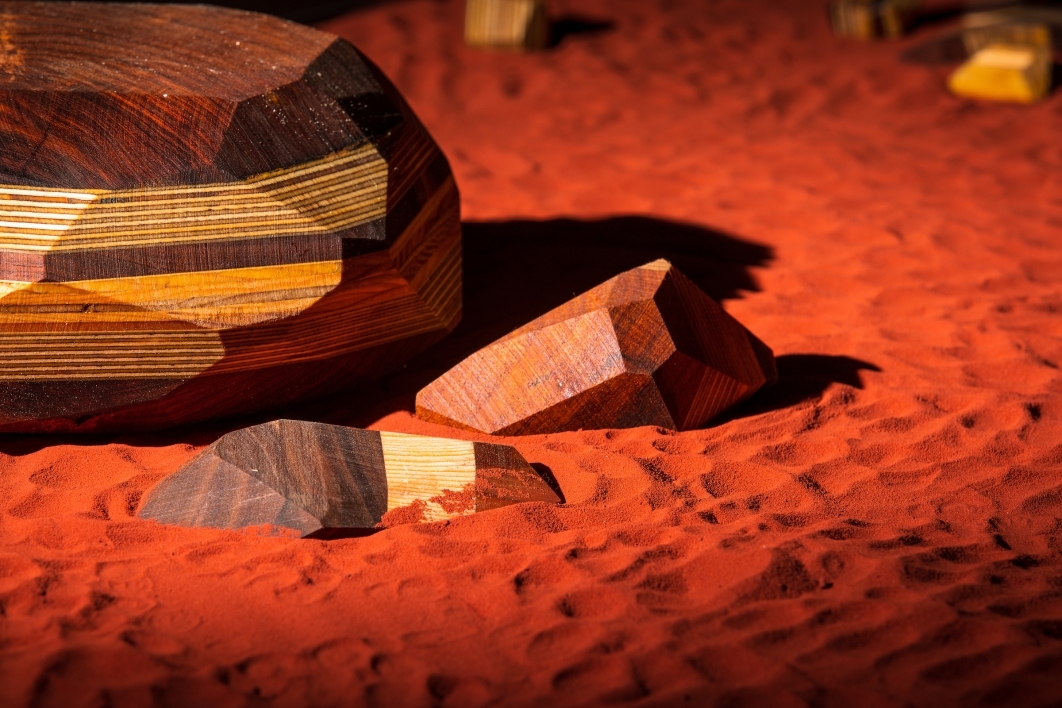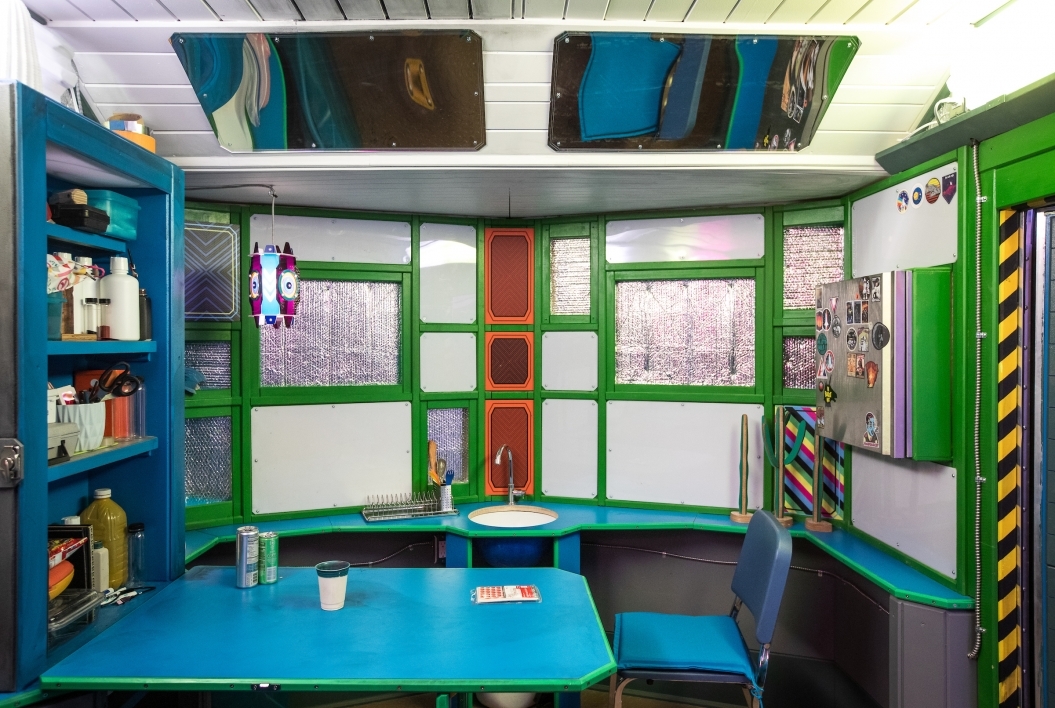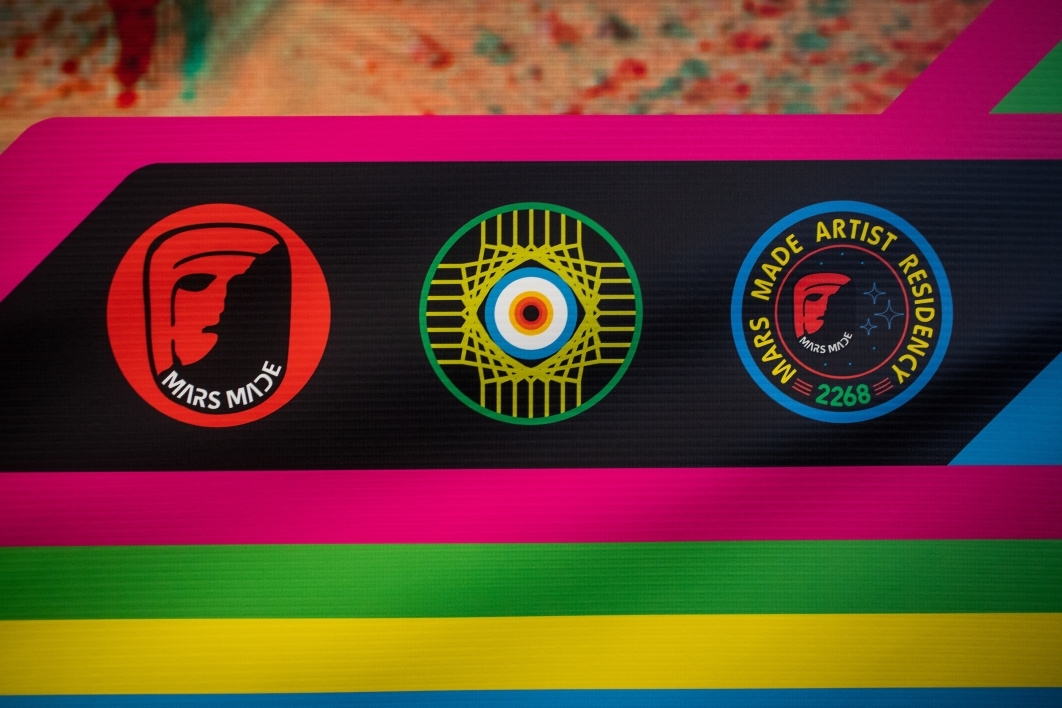Editor’s note: This is part of a series of profiles for fall 2019 commencement.
Roy Wasson Valle has had a flourishing art practice in the Valley for several years, but decided he wanted to expand his horizons, so he returned to Arizona State University to pursue a master’s of fine arts degree.
“I needed access to a new circle,” said Wasson Valle, who is graduating this month and has been named the Outstanding Graduate Student in the Herberger Institute for Design and the Arts.
Wasson Valle earned his bachelor’s degree in sculpture at ASU in 2003, and his professor from that time, Jim White, persuaded him to seek the master’s.
“He said, ‘It may open up doors you didn’t know were closed.’ And that’s absolutely true, and even further, it also revealed doors I didn’t know existed,” Wasson Valle said.
The sculptor works frequently with his wife, artist Koryn Woodward Wasson, in creating large-scale installations. Much of their work is meant for a general audience, which often means kids.
“It’s my job to make connections and present something they don’t normally see, so having it accessible to the public is important, and that it’s not necessarily in a museum space,” he said.
“It’s what I think of as a third space — not quite a store and not quite a museum. The best way for that is pubic art and then you have a real responsibility to the people who paid for it and experience it.”
One path the degree program opened for Wasson Valle led him to the Interplanetary Initiative at ASU, an interdisciplinary project to create practical methods for humans to live and work in space. He sat in on some meetings and eventually took on the project that became his master’s thesis — a vision of what a human work site on Mars would look like in the 23rd century.
His speculative “Mars Made: Retroforms” exhibit was an immersive environment that envisioned a new world. The display, at ASU’s Grant Street Studios in Phoenix, included a living and working “pod,” housed in a trailer inside the studio. Wasson Valle designed details inside the pod like scientific equipment, storage space and even stickers with a “corporate logo” on them.
The other part of the exhibit imagines the surface of Mars. Wasson Valle created a huge mural in the space from a NASA photo of Mars, which he made into a three-dimensional image (when viewed through the provided 3D glasses).
The Interplanetary Initiative had some requirements for what the project should include, but Wasson Valle had freedom to speculate.
“I took the idea further into the future, where there was artist’s residency on Mars, which had a well-established community. This is the work that’s a reaction to that experience,” he said.
“I’m not making the claim that this is supposed to be Mars. This is supposed to be for people on Earth who haven’t been to Mars.”
The exhibit included tall, colorful installations that are meant to represent saguaros.
“I saw in this idea that there would be a lot of southwest desert type of plants that could maybe survive well underground on Mars in lava tubes,” he said.
“I was very interested in transforming flat work into 3D work, so I spent a lot of time designing these columns.”
The design was printed onto lightweight, corrugated plastic, which was folded around dowels and hung from the ceiling so they spin around.
The elaborate lights hanging from the ceiling were made on a laser cutter and the pieces fitted together.
Almost everything in the show can be disassembled and stored flat.
“The more that I work on shows, the more I consider how it’s going to be stored afterward. You run out of space,” he said.
Wasson Valle answered some questions from ASU Now:
Question: You did a lot of research on Mars for this art work. What are some of the most interesting facts you discovered?
Answer: I know a lot more than I ever did but there’s so much that I don’t know. Even for me, this is inspiration to learn more. It’s supposed to inspire people to think about living and working on Mars. It’s the inspiration for new generation. The more I’ve been working on it and thinking about it, sending people to other planets is a monumental task and there’s a lot of argument about, ‘Why should we spend these resources?’ Whenever we think about how thin the atmosphere is, we start to appreciate what we have. This is to create an effort to preserve what we have.
But I do know a few facts about Mars. One of the most interesting is that there is snow on Mars and it looks like fog because the snowflakes are the size of red blood cells.
Q: What was your ‘aha’ moment when you knew you wanted to be a sculptor?
A: My father was a sculptor, so it’s in my upbringing. I was always making toys and things. He did a lot of work in a church, which is an installation where you’re thinking about how the space is being used and where all the elements will be. I was used to thinking of sculpture in a full environment, not just in a white gallery.
I’ve always done three-dimensional work. I did a lot of work on cardboard and I would cut out the pieces, paint them and assemble them. When I came to ASU I was an intermedia major because I thought I could use digital media and have more freedom. Then I took a sculpture class with Jim White and he said, ‘You should switch to sculpture because you can do whatever you want.’ For me, it really resonated and made sense.
Q: What advice would you give to someone who wants to pursue a master’s in fine arts?
A: It’s important to take a break between the two things (undergraduate and graduate degrees). It’s important to have some time to process everything you’ve been doing, and to work out in the world for a few years. It doesn’t have to be 13 years like I did. But it’s important to have some space to put all the parts together.
Q: What was your favorite spot on campus?
A: I spent a lot of time at the Nelson Fine Arts Center, which I also did before (as an undergrad), because it’s a beautiful spot. It’s peaceful and I really like the pink walls. I’m attracted to human-made spaces that are empty.
Top image: Roy Wasson Valle, the Outstanding Graduate Student in the Herberger Institute for Design and the Arts, created the “Mars Made: Retroforms” exhibit at the Grant Street Studios in Phoenix. On the wall of the studio is a mural-sized photo of the surface of Mars, and to the left is his interpretation of a saguaro on Mars, made of lightweight corrugated plastic. Photo by Charlie Leight/ASU Now
More Arts, humanities and education
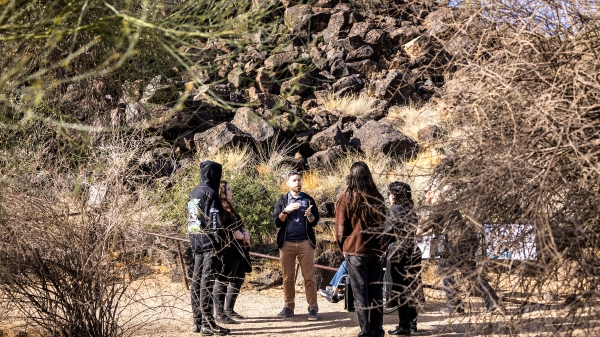
Petroglyph preserve celebrates 30th anniversary with ancient, modern tales
The Deer Valley Petroglyph Preserve provides a beautiful walk through a pristine desert where chuckwalla lizards are as plentiful as the cacti that comes in many shapes and sizes.It’s also a step…
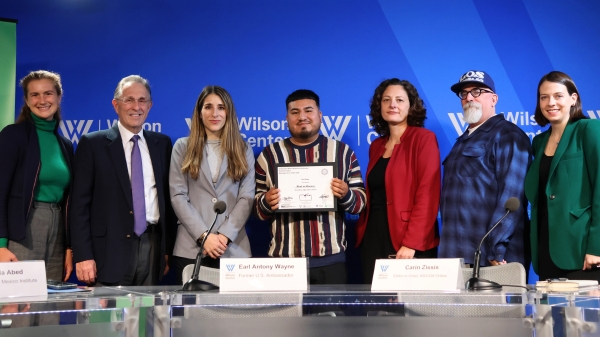
Kaleidoscope short film contest inspires powerful binational filmmaking in its second year
“We come to this country not to steal anybody’s jobs but to take advantage of the opportunities that the rest ignore. We’ve been taking care of the American soil for many years. But our hands will…
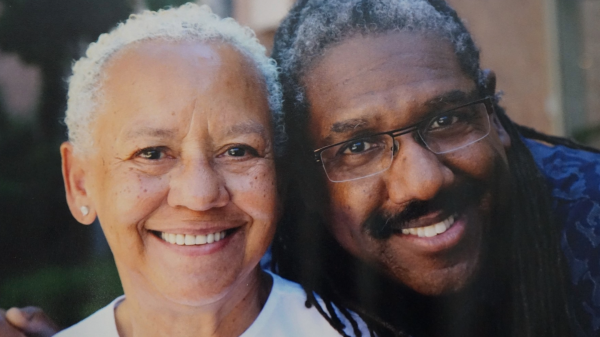
ASU's Neal Lester reflects on life, death of poet Nikki Giovanni
When Neal Lester heard on Monday that poet and activist Nikki Giovanni had died, the news hit hard.Lester, the founding director of Arizona State University’s Project Humanities and a Foundation…

